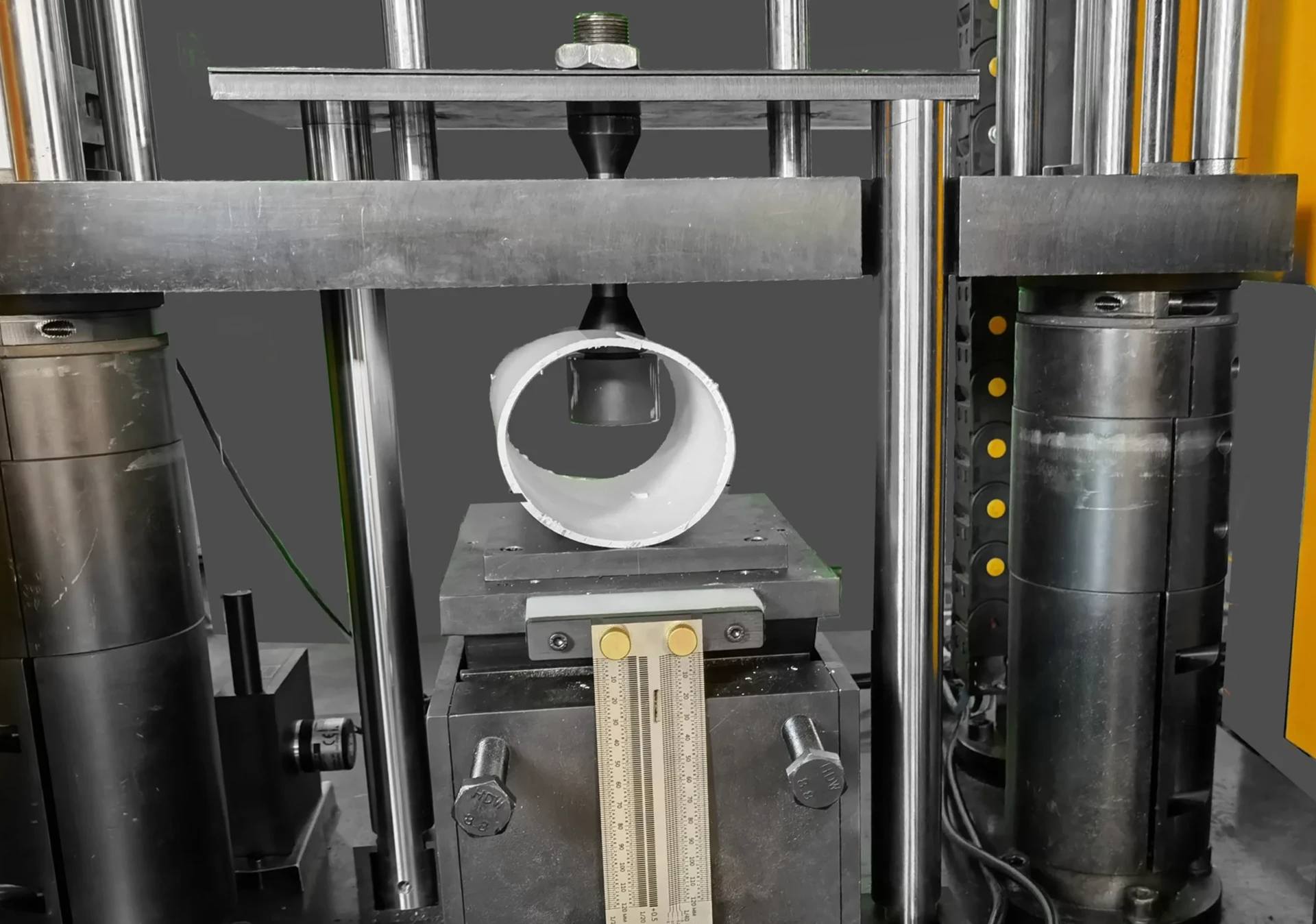ISO 7758 Pendulum Impact Test
The ISO 7758 Pendulum Impact Test is a standardized procedure used to evaluate the resistance of packaging materials and products to impact forces. This test is particularly useful in sectors where protecting goods during transportation or handling is critical, such as manufacturing, logistics, and retail. The pendulum, which swings at a specific angle, delivers an impact force to the specimen, simulating potential damage that could occur from dropping or colliding objects.
The primary objective of this test is to determine the energy absorption capability of packaging materials under impact conditions. By measuring how much energy the material can absorb before failure occurs, manufacturers and quality managers can assess the effectiveness of their packaging solutions in protecting valuable goods.
The pendulum impact test follows a series of steps designed to ensure accurate and repeatable results. These include selecting an appropriate pendulum weight that matches the expected impact conditions, positioning the specimen correctly on the testing machine, ensuring the environment is controlled for temperature and humidity, and conducting multiple tests to average out any variability.
For this test, it is crucial to prepare specimens according to ISO 7758 requirements. This typically involves cutting the material into standardized dimensions and thicknesses. The choice of specimen size can significantly influence the outcome of the test, as larger specimens may absorb more energy than smaller ones due to their increased mass.
The testing machine used for this procedure is designed specifically for pendulum impact tests. It consists of a pendulum arm that swings with controlled speed and angle over the specimen placed on a rigid surface. The apparatus must be calibrated regularly to ensure consistent test results across different specimens and operators.
Once the test is conducted, several key parameters are measured. These include the maximum force delivered by the pendulum, the energy absorbed by the specimen, and the residual height of the pendulum after impact. These measurements provide a comprehensive picture of the packaging material's performance under impact conditions.
The results of this test are essential for quality managers to make informed decisions about their packaging designs. By understanding where and how materials fail during impact tests, they can identify areas for improvement and enhance overall product protection. Additionally, compliance officers rely on these data points when ensuring that products meet regulatory requirements related to safety and durability.
Scope and Methodology
| Parameter | Description |
|---|---|
| Pendulum Weight | The weight of the pendulum used to deliver impact forces. |
| Impact Angle | The angle at which the pendulum strikes the specimen. |
| Test Specimen Size | The dimensions and thicknesses required for accurate testing. |
| Testing Environment | The controlled conditions of temperature and humidity during tests. |
| Data Collection | Including maximum force, absorbed energy, residual height of the pendulum. |
The ISO 7758 Pendulum Impact Test is conducted according to international standards that ensure consistency and reliability. This includes selecting a pendulum weight that corresponds to the expected environmental conditions and impact scenarios. The angle at which the pendulum strikes the specimen also plays a critical role in determining the outcome of the test.
The size and shape of the test specimens are standardized to minimize variability in results. Specimens must be cut to precise dimensions and thicknesses, ensuring that each sample provides comparable data points for analysis. The testing environment is carefully controlled to maintain consistent temperature and humidity levels, which can affect material properties during impact tests.
Data collection involves measuring several key parameters. These include the maximum force delivered by the pendulum, the energy absorbed by the specimen, and the residual height of the pendulum after impact. By analyzing these metrics, testers gain valuable insights into the packaging materials' performance under impact conditions. This information is essential for quality managers to make informed decisions about their packaging designs.
Customer Impact and Satisfaction
Enhanced product protection leading to reduced damage during transportation and handling.
Improved compliance with regulatory requirements, ensuring safety standards are met.
Precise measurement of material properties which aids in optimizing packaging designs.
Data-driven decision-making for continuous improvement in packaging performance.
Increased customer confidence due to reliable and robust product protection measures.
Cost savings from reduced waste and increased efficiency in packaging production processes.
Enhanced reputation among stakeholders, including suppliers, customers, and regulatory bodies.
Better resource allocation for quality assurance programs based on test results.
The ISO 7758 Pendulum Impact Test offers numerous benefits to its users. By providing accurate data on material performance under impact conditions, it enables companies to enhance their packaging designs and improve overall product protection. This leads to reduced damage during transportation and handling, improved compliance with regulatory requirements, and enhanced customer confidence. Additionally, the test results contribute to better resource allocation for quality assurance programs and cost savings from more efficient production processes.
International Acceptance and Recognition
The ISO 7758 Pendulum Impact Test has gained widespread acceptance across various industries due to its reliability and accuracy. Its use is mandated in several international standards, including ISO 14039-1 for flexible packaging films used in the food industry. Compliance officers from manufacturing firms often cite this test as a critical step in ensuring product safety and quality.
The pendulum impact test is recognized by regulatory bodies worldwide because it provides consistent results that can be compared across different locations and organizations. This standardization ensures that all parties involved have confidence in the outcome of these tests, making them an essential tool for maintaining high-quality packaging standards globally.
In addition to its widespread use within industries like manufacturing, logistics, and retail, the pendulum impact test is also utilized by research institutions and educational facilities focused on materials science. These entities often employ this test to explore new packaging materials or improve existing ones based on real-world performance data.





